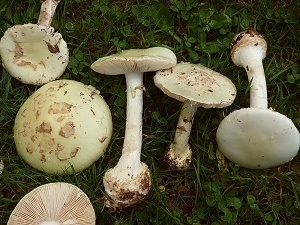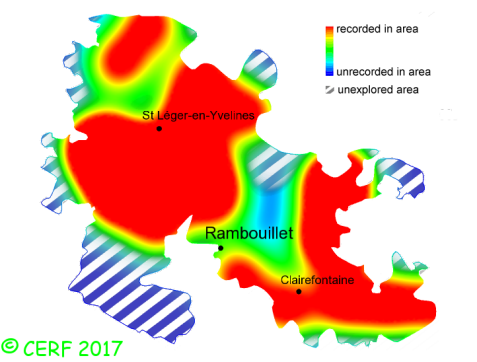| Amanita citrina (Schäff.) Pers. |
|
|
|
|
|
|
The cap is pale lemon yellow to ivory white, globular then convex and expanded; its margin is smooth, obtuse. The cap surface is covered with persistent irregular white patches, turning ochre-brown with age, not viscid nor sticky. The stem is white, washed with yellowish, bulbous, with a white circumcised volva, and a large membranous ring, white or yellow, striate. The flesh is white to slightly yellowish, unchanging; its taste is mild to unpleasant (radish or raw potato); the odour is strong, of raw potato; its texture is fibrous. The gills are pale yellow to white, free, crowded (nb of gills per 90° ~ 39 ). The spore print is white. This species is mycorrhizal. It grows on the ground, in coniferous and broad-leaved woods, on a rather acid and sandy soil, with oak, beech, birch, pine, fir, spruce. The fruiting period takes place from April to December.
Chemical tests : none. Distinctive features : lemon yellow cap, topped with white or brown flakes arranged like a geographical map; white stem with thin white ring, lined with yellow; circumcised volva at stem base; pale yellow to white flesh; distinctive smell of raw potato Amanita citrina is very frequent and present everywhere in the forest of Rambouillet, and is very frequent, more generally speaking . | ||
|
page updated on 14/01/18

